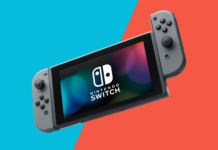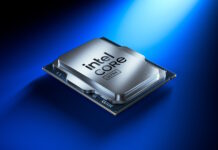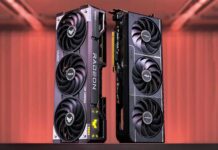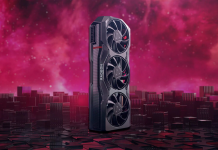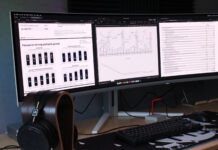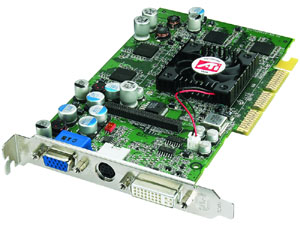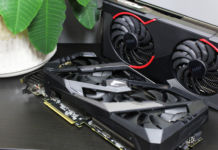It wasn’t too long ago that we took a quick glimpse at the Radeon 9600 Pro in our Radeon 9800 Pro preview. This time ATi has supplied us with a sample of the successor to the Radeon 9500 Pro. The question we ask ourselfs today is of course if Radeon 9600 Pro is the worthy successor that we’re all waiting for or not.
It wasn’t too
long ago that we took a quick glimpse at the Radeon 9600 Pro in our Radeon
9800 Pro preview. This time ATi has supplied us with a sample of the successor
to the Radeon 9500 Pro. The question we ask ourselfs today is of course if
Radeon 9600 Pro is the worthy successor that we’re all waiting for or not.
Radeon 9600 or
RV350 is ATis first attempt at 0.13 micron processing and the initial impression
are good. The first batch of samples worked properly and it seems as if ATi
had a less bumpy road to the 0.13 process than nVidia had with their NV3X
series.
Since we don’t
have the main competitor, GeForce FX 5600 Ultra, in our labs yet we’ll compare
this new card to the Radeon 9500 Pro and Ti4600 today. We’ve also ran some
benches with the card running at Radeon 9600 non-Pro speeds. Let’s get it
on.
Since this is
only a reference sample we didn’t get any retail box nor accompanying software
etc.
Radeon 9600 Pro

|
Chip: |
RV350
|
Manufacturing process: |
0.13-micron
|
Transistors: |
~60 mil.
|
Core clock speed: |
400 MHz
|
Memory clock speed: |
|
Pixel Shader: |
2.0
|
Vertex Shader: |
2.0
|
Pixel
Pipelines/Pixel Fillrate: |
4
/ 1600 MP/s
|
TMU’s/Texel Fillrate: |
1
/ 1600 MT/s
|
RAMDAC: |
(2) 400 MHz
|
Amount of memory: |
128 MB
|
Type of memory and interface: |
128-bit, DDR-SDRAM
|
In- and outputs: |
VGA, DVI-I, S-Video Ut
|
Extra
peripherals: |
|
Software: |
–
|
Full version applications: |
–
|
Estimated price: |
~185 USD
|
Looking at the
specs reveals that the Radeon 9600 Pro is seemingly a overclocked Radeon 9500
non-Pro. There are some minor differences except for the manufacturing process
and clock frequencies though. For an example this card has a slightly more
optimized memory controller which should help out with those bandwidth demanding
situations, especially when using Full Scene Antialiasing.
 Front
Front
|
As you can see
Radeon 9600 Pro has a very small fan/heatsink. Due to the 0.13 process the
core still doesn’t get very hot even though it’s clocked at 400 MHz and we
know that there’s headroom for some great overclocking here which we will
take a closer look at later on in this preview. The fan is a bit loud though,
pretty strange move by ATi since this card could probably come equipped with
passive cooling just as well or at least a fan that doesn’t spin this fast.
It’s even a bit louder, or rather more annoying, than the fan on a Radeon
9800 Pro.
A 4 pixel pipeline achitecture at 400 MHz is still not enough to challenge
the fillrate of a Radeon 9500 Pro which can spit out 600 million pixels more
per second. To make up for this the 9600 pro has a slightly higher bandwidth
with it’s 600 MHz memory over the 9500 Pro’s 540 MHz memory.
 Back
Back
|
The main competitor
from nVidia to this card is the FX 5600 cards as they both (Ultra and non-Ultra)
fall into roughly the same price range as the Radeon 9600 Pro. The 5600 Ultra
has more bandwidth but less fillrate and the non-Ultra has less bandwidth
as well as less fillrate. Theory and practice does differ though so we won’t
comment this further until we’ve got a sample of the NV31 in our hands.
 Output
Output
|
The RV350 will
be available in a couple of incarnations: Radeon 9600 64 MB, 128 MB, Pro 128
MB and perhaps Pro 256 MB if rumors turn out to be true about the latter.
We’ve also seen a "mock" 9600 called 9600 TX which is in fact an
underclocked 9500 Pro.
If the 9600 Pro
128 MB is ~185 USD the 256 MB if/when available should be roughly 200 USD,
it’s very questionable what good an extra 128 MB would do though. It might
be useful when using high levels of FSAA at high res in a game with large
textures. Problem is that a mid end card doesn’t perform playably under those
circumstances in any case so it’s sort of a catch 22 situation here..
Unfortunately
we still haven’t got a GeForce FX 5600 available here at NordicHardware so
we can’t give you any results from this card. (We’ll keep reminding our contacts
that we want one though.) This is somewhat sad since the FX is the main competitor
for the Radeon 9600 Pro. Comparing our results with other reviews might give
an indication on where the FX might fit in our graphs. And when we get our
hands on a card ourselves we’ll update you accordingly.
With our Athlon
XP 2600+ we don’t even hit the CPU-limitation fully in Quake 3 and the scores
differ quite a lot. GeForce4 Ti4600 is still going strong in Quake 3 while
9500 and 9600 (non-Pro that is) are almost tied for the last position. The
contender today can’t keep up with it’s older brother Radeon 9500 Pro just.
A situation similar to that of 3DMark2001.
The Radeon
9600 Pro still stays in the third place even when enabling 2x FSAA. 9600
non-Pro quickly shows that it doesn’t have what it takes with its measly
6,3 GB/s bandwidth. The Radeon 9600 Pro does a better job at keeping up
with the 9500 Pro when using 2xAA, certainly due to the higher bandwidth.
At 4x FSAA
9600 Pro finally pulls ahead of Ti4600. Both 9600 and Ti4600 basically faisl
to deliver fully playable framerates at anything beyond 1280×1024 when this
higher degree of antialiasing is activated.
Back to third
place in 2 out of three tests. The 9500 Pro is more impressive here mainly
due to its fillrate advantage. The fight between 9600 and 9500 (non-Pro)
turns out to be intense with a slight advantage for the 9600 due to the
higher fillrate. This test shows however that bandwidth is also important
when using AF, else the difference would’ve been greater.
UT2003 is
one of the more popular games and benchmarks at the moment. It’s some hardcore
DX7 action with a twist of DX8 features when we start benchmarking this
game.
Fillrate is of
the essence when it comes to UT2003 which we can see by the large drop between
1024 and 1600. All cards in our test have problems with running 1600×1200.
As we can see nVidia former king does very good in this test and takes the
lead. As UT2003 is very fillrate intense we expected the 9600 to pull ahead
of the 9600 in this test but apprently not.
Enabling 2x
FSAA doesn’t do much to change the outcome. Radeon 9600 Pro is again in
the third place though with less of a margin that when we ran without AA.
With 4x FSAA
we get some strange results with the 9500 non-Pro which drops a lot of relative
performance at 1280×1024. Another interesting tidbit is that the 9600 is
ahead of the 9500 here. This doesn’t really make sense since the higher
bandwidth of the 9500 should rather show when using AA. But without AA when
fillrate should be more important the 9600 ought to be faster, yet it wasn’t.
What can I say… computers ya know. (I of course re-ran the tests a couple
of times to verify the results.)
Radeon 9500
Pro stomps the competitions. As texel fillrate becomes even more important
here the 9600 pulls ahead of the 9500. The 9600 Pro doesn’t do to well compared
to it’s older brother. I don’t really know what’s up with the Ti4600 "stopping"
at 19 fps at both 1280 and 1600.
Since Quake
3 is quite old this opens up for the usage of really extreme settings.
Once again the
9500 Pro takes the lead. Ti4600 and 9600 Pro are basically sharing the second
place. 1600×1200 brings down all the cards down below 100 fps when using 2xAA
and 8xAF.
Now this is
more like it: 4x AA / 8x AF. These settings are what one would want to use
for optimal image quality. Ti4600 starts loosing ground here and we can
see a trend where 9600 Pro is going head to head with 9500 Pro whilst Ti4600
is dealing with the 9600 non-Pro.
In earlier review
we’d had "problems" with UT2003 when it comes to AA/AF performance.
It’ll be interesting to see how well the RV350 fares here.
Radeon 9500 Pro
is still on top but performance doesn’t look too promising for any of the
cards even at 1024×768. 9600 non-Pro and Ti4600 perform very similarily when
using both AA and AF.
As we can see
the overclocking helped even out the advantage that 9500 Pro has over 9600
Pro. The performance increase in Quake 3 with 4x AA is simply amazing. With
these overclocked settings the 9600 Pro has a bandwidth advantage of over
3 GB/s which of course explains the results, especially with 4x AA. Pretty
great in 3DMark 01/03 too. The fillrate is still a bit short and we’d need
550 MHz to bring it up to the level of 9500 Pro. We’ve seen some reviews
who’ve gotten better overclocks out of the 9600 Pro than this so your milage
may vary.
Still this brings much more value to the product. If you are interested
in voiding your warranty that is.
With some decent
cooling and perhaps even a voltage mod I bet this card can do wonders when
it comes to overclocking.
The sucessor
to the popular Radeon 9500 Pro is here, or is it? In all tests we’ve ran the
Radeon 9500 Pro is the fastest card. Right now both products are within the
same price range, give or take a dollar or two.
Our recommendation
is to go out and buy a Radeon 9500 Pro right now before they are phased out.
I just find it hard to share the optimism that other sites have expresed over
this card. Sure the 9600 Pro is cheaper to manufacture for ATi and
their partners but for us consumers it doesn’t offer anything new. As we’ve
seen the Radeon 9600 non-Pro doesn’t deliver any breathtaking performance
either.
As long as Radeon 9500/9500 Pro are available we recommend those products
instead.
The naming scheme
is also pretty troublesome. Radeon 9600 and Radeon 9600 Pro are both somewhat
slower than their older predecessors and yet they have higher version numbers.
A more sane option would be to call these cards Radeon 9400 and Radeon 9400
Pro. The problem there however is of course that the Radeon 9600 Pro is faster
than the Radeon 9500 non-Pro so calling it Radeon 9400 Pro would also be misleading.
Replacing the
Radeon 9500 Pro with the Radeon 9600 Pro is sane if you look at it from the
manufacturers point of view but for us consumers it’s just bad news.
One thing
missing from our equation is the GeForce FX 5600 Ultra and non-Ultra. Even
if we take it into consideration it still doesn’t change the fact that the
Radeon 9500 Pro is still better than Radeon 9600 Pro. (And Radeon 9500 is
still better than Radeon 9600.)
ATi: 0 – ATi: 1 …
One thing
that does up the value of this product is the extreme overclocking potential
which can bring the cards performance on par and even beyond that of a Radeon
9500 Pro.
While you are
here perhaps you’d like to ask some questions or just discuss the new ATi
chips in general.
Register here.
A discussion about this new technology is already started here.


